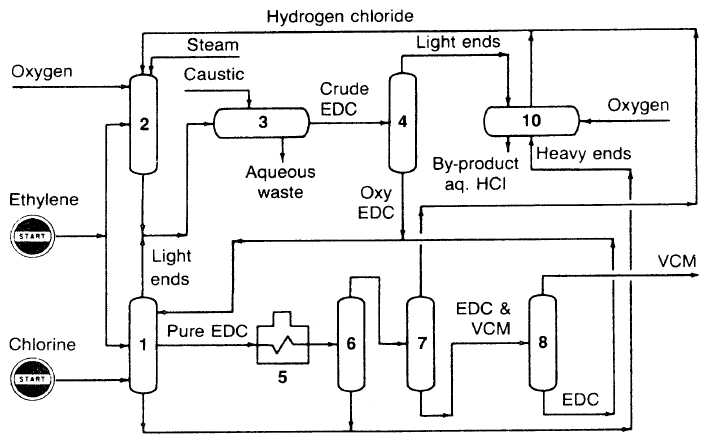

علم الكيمياء

تاريخ الكيمياء والعلماء المشاهير

التحاضير والتجارب الكيميائية

المخاطر والوقاية في الكيمياء

اخرى

مقالات متنوعة في علم الكيمياء

كيمياء عامة


الكيمياء التحليلية

مواضيع عامة في الكيمياء التحليلية

التحليل النوعي والكمي

التحليل الآلي (الطيفي)

طرق الفصل والتنقية


الكيمياء الحياتية

مواضيع عامة في الكيمياء الحياتية

الكاربوهيدرات

الاحماض الامينية والبروتينات

الانزيمات

الدهون

الاحماض النووية

الفيتامينات والمرافقات الانزيمية

الهرمونات


الكيمياء العضوية

مواضيع عامة في الكيمياء العضوية

الهايدروكاربونات

المركبات الوسطية وميكانيكيات التفاعلات العضوية

التشخيص العضوي

تجارب وتفاعلات في الكيمياء العضوية


الكيمياء الفيزيائية

مواضيع عامة في الكيمياء الفيزيائية

الكيمياء الحرارية

حركية التفاعلات الكيميائية

الكيمياء الكهربائية


الكيمياء اللاعضوية

مواضيع عامة في الكيمياء اللاعضوية

الجدول الدوري وخواص العناصر

نظريات التآصر الكيميائي

كيمياء العناصر الانتقالية ومركباتها المعقدة


مواضيع اخرى في الكيمياء

كيمياء النانو

الكيمياء السريرية

الكيمياء الطبية والدوائية

كيمياء الاغذية والنواتج الطبيعية

الكيمياء الجنائية


الكيمياء الصناعية

البترو كيمياويات

الكيمياء الخضراء

كيمياء البيئة

كيمياء البوليمرات

مواضيع عامة في الكيمياء الصناعية

الكيمياء الاشعاعية والنووية
Vinyl Chloride (CH2=CHCl)
المؤلف:
sami matar & Lewis. F. Hatch
المصدر:
Chemistry of PETROCHEMICAL PROCESSES
الجزء والصفحة:
p 202
22-8-2017
3081
Vinyl Chloride (CH2=CHCl)
Vinyl chloride is a reactive gas soluble in alcohol but slightly soluble in water. It is the most important vinyl monomer in the polymer industry. The U.S. production of vinyl chloride, the 16th highest-volume chemical, was approximately 14.8 billion pounds in 1994. Vinyl chloride monomer (VCM) was originally produced by the reaction of hydrochloric acid and acetylene in the presence of HgCl2 catalyst. The reaction is straightforward and proceeds with high conversion (96% on acetylene):

However, ethylene as a cheap raw material has replaced acetylene for obtaining vinyl chloride. The production of vinyl chloride via ethylene is a three-step process. The first step is the direct chlorination of ethylene to produce ethylene dichloride. Either a liquid- or a vapor-phase process is used:

The exothermic reaction occurs at approximately 4 atmospheres and 40–50°C in the presence of FeCl3, CuCl2 or SbCl3 catalysts. Ethylene bromide may also be used as a catalyst. The second step is the dehydrochlorination of ethylene dichloride (EDC) to vinyl chloride and HCl. The pyrolysis reaction occurs at approximately 500°C and 25 atmospheres in the presence of pumice on charcoal:

The third step, the oxychlorination of ethylene, uses by-product HCl from the previous step to produce more ethylene dichloride:

Ethylene dichloride from this step is combined with that produced from the chlorination of ethylene and introduced to the pyrolysis furnace. The reaction conditions are approximately 225°C and 2–4 atmospheres. In practice the three steps, chlorination, oxychlorination, and dehydrochlorination, are integrated in one process so that no chlorine is lost. Figure 1.1 illustrates the process.

Figure 1.1. The European Vinyls Corporation process for producing vinyl chloride: (1) chlorination section, (2) oxychlorination reactor, (3) steam stripping and caustic treatment of water effluent, (4) EDC distillation, (5) pyrolysis furnace, (6,7,8) VCM and EDC separation, (10)
by-product reactor.
 الاكثر قراءة في البترو كيمياويات
الاكثر قراءة في البترو كيمياويات
 اخر الاخبار
اخر الاخبار
اخبار العتبة العباسية المقدسة

الآخبار الصحية















 قسم الشؤون الفكرية يصدر كتاباً يوثق تاريخ السدانة في العتبة العباسية المقدسة
قسم الشؤون الفكرية يصدر كتاباً يوثق تاريخ السدانة في العتبة العباسية المقدسة "المهمة".. إصدار قصصي يوثّق القصص الفائزة في مسابقة فتوى الدفاع المقدسة للقصة القصيرة
"المهمة".. إصدار قصصي يوثّق القصص الفائزة في مسابقة فتوى الدفاع المقدسة للقصة القصيرة (نوافذ).. إصدار أدبي يوثق القصص الفائزة في مسابقة الإمام العسكري (عليه السلام)
(نوافذ).. إصدار أدبي يوثق القصص الفائزة في مسابقة الإمام العسكري (عليه السلام)


















